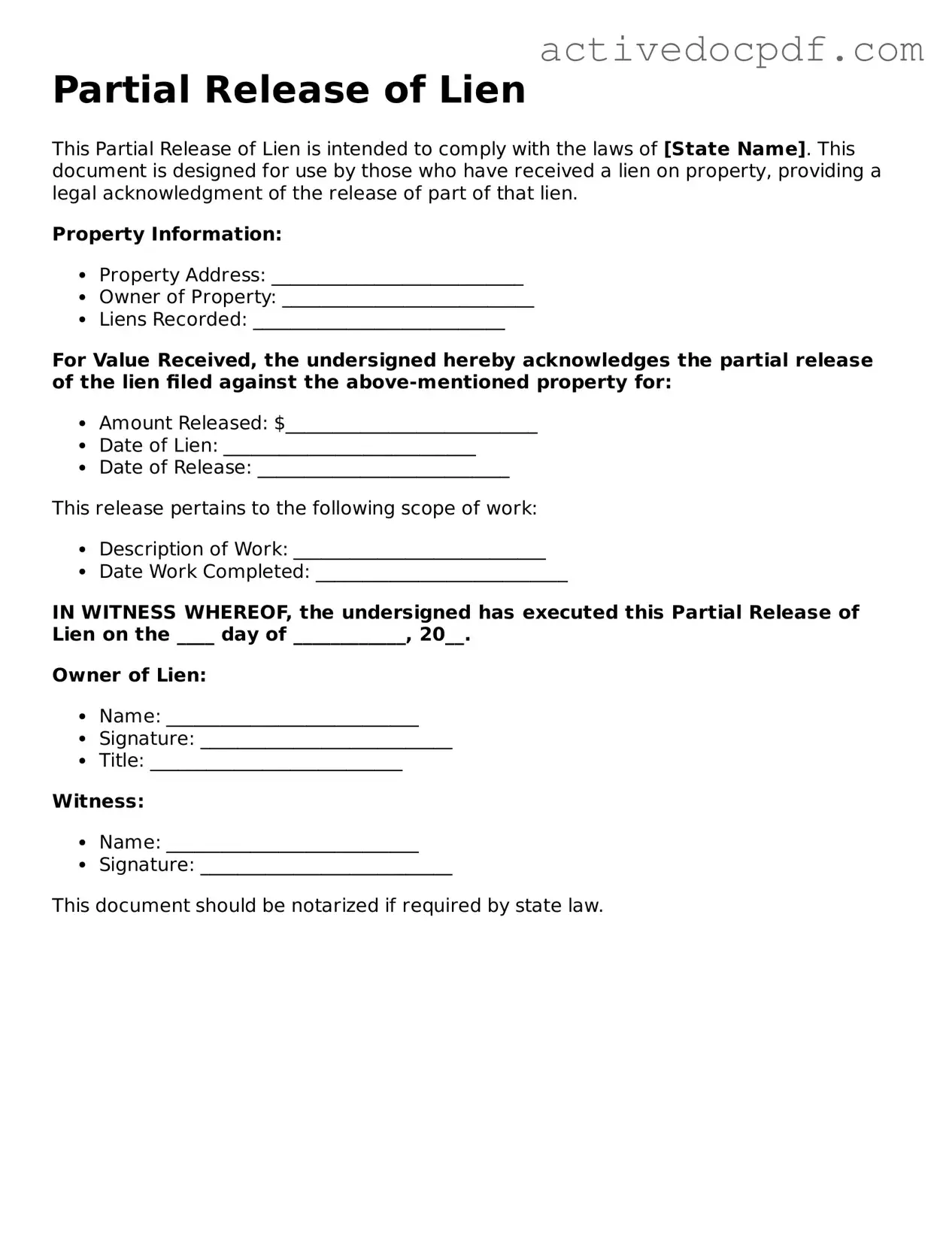What is a Partial Release of Lien?
A Partial Release of Lien is a legal document that allows a lienholder to release a portion of their claim against a property. This typically occurs when a contractor or supplier has been paid for part of their work or materials, and they agree to release their lien on that portion of the property. It helps clarify ownership and reduces the burden on the property owner.
When should I use a Partial Release of Lien?
You should consider using a Partial Release of Lien when you have made a payment to a contractor or supplier for a specific portion of work completed or materials provided. This document protects the property owner by ensuring that the lienholder no longer has a claim on that specific amount. It’s also beneficial for the contractor, as it demonstrates that they have been compensated for their work.
Who needs to sign the Partial Release of Lien?
The Partial Release of Lien typically requires the signature of the lienholder, such as a contractor or subcontractor, who is releasing their claim. Additionally, it may be advisable for the property owner to sign the document to acknowledge the release. This ensures that all parties are aware of the agreement and its implications.
How does a Partial Release of Lien affect my property?
Once a Partial Release of Lien is executed, it removes the lienholder's claim on the specified portion of the property. This can help improve the property's marketability and provide peace of mind to the property owner. However, it’s important to remember that the remaining amount owed may still be subject to a lien until fully paid.
Is a Partial Release of Lien the same as a Full Release of Lien?
No, a Partial Release of Lien and a Full Release of Lien are not the same. A Full Release of Lien removes all claims against the property, indicating that the lienholder has been fully paid. In contrast, a Partial Release of Lien only addresses a portion of the claim, leaving the remainder intact until additional payments are made.
What happens if I don’t get a Partial Release of Lien?
If you do not obtain a Partial Release of Lien after making a payment, the lienholder may still retain a claim against your property for the unpaid balance. This could lead to complications if you decide to sell or refinance your property. It is essential to secure this document to avoid potential disputes and ensure clear ownership.
You can typically obtain a Partial Release of Lien form from various sources, including legal websites, local government offices, or your attorney. Many jurisdictions provide standardized forms that can be filled out and submitted. Ensure that the form complies with your state’s specific requirements to avoid any issues.
